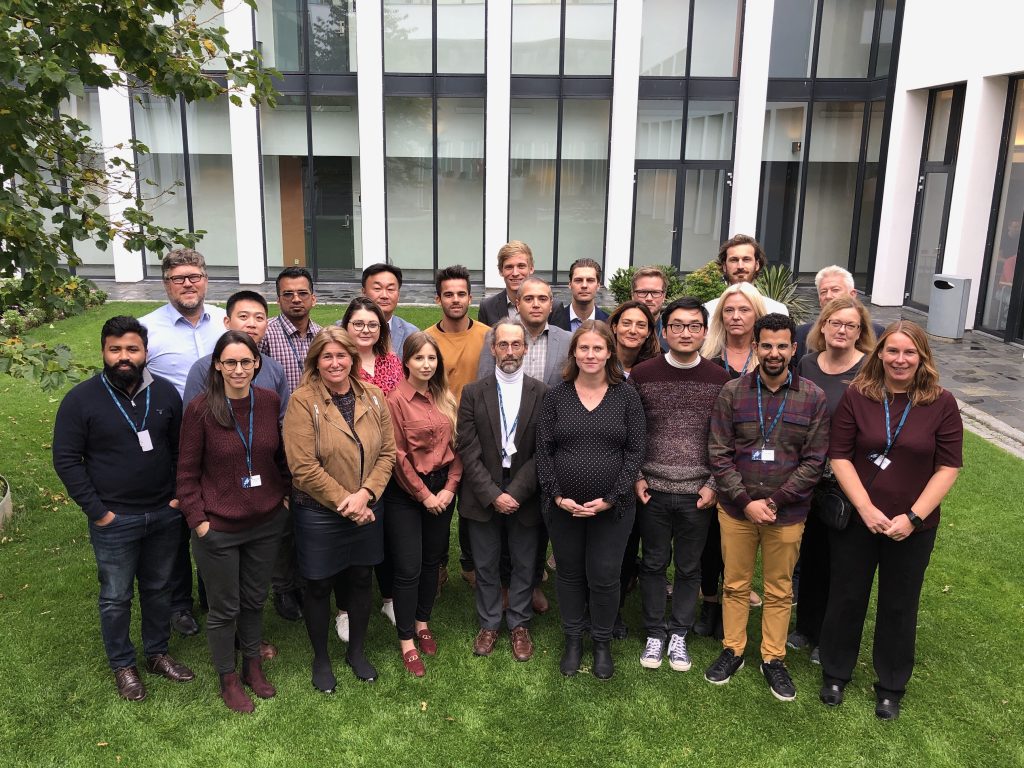
Between 24th – 25th of September, 3 members (Amit, Simen and Sathiya) from the TARG research team participated at the ErgoShip conference, hosted by Western Norway University of Applied Sciences and presented three research articles. ErgoShip is an international conference focused on maritime human factors. The scope of this year’s conference was “Human-centred shipping – is there a future without it?”
Following are the paper title and abstracts of the presented research work,
“Virtual Reality as a future training medium for seafarers: potential and challenges”
Sathiya Kumar Renganayagalu
Abstract – The field of wearable technologies has evolved greatly in the past few years. Virtual Reality (VR) Head Mounted Displays (HMDs) are an emerging technological trend among the wearable technologies and promises to revolutionize the way people learn. Due to their ability to provide highly immersive and engaging experiences, VR based simulators are quickly becoming indispensable part of modern professional training. Nevertheless, VR still has to address many challenges and overcome the limitations before being adopted as training simulators. This paper aims to perform a brief analysis of the potential of VR in maritime training and possible challenges in adopting the technology from human factors, innovation and technology point of view for a holistic perspective. An initial investigation of the technology acceptance of VR engine room simulators among marine engineering students was carried out through an empirical study and the results are also presented in the paper.
“Immersive Virtual Reality in Marine Engineer Education”
Simen Hjellvik, Sathiya Kumar Renganayagalu, Steven C. Mallam and Salman Nazir
Abstract – As simulation and computing technologies advance, new pedagogic opportunities are enabled which can add value to student learning outcomes. This study examines simulator training in maritime education comparing the emerging state-of-the-art technology of Immersive Head Mounted Display (HMD) Virtual Reality (VR) and Non-immersive 3D Desktop Virtual Reality desktop simulators. Two student groups from an undergraduate marine engineering programme completed identical tasks related to starting up a fuel oil separator in one of the two conditions: (i) Non- Immersive 3D Desktop VR (n=5), and (ii) Immersive HMD VR (n=6). After the experimental scenario the participants were given a memory power test to address differences in memory accuracy between the two simulator types. A significant difference was found in accuracy of memory which diverges between the groups with the Non-Immersive 3D Desktop VR group scoring lower than the Immersive HMD VR group. These results provide empirical evidence for the value of Immersive HMD VR simulators for marine engineering education.
“Catching up with time? Examining the STCW competence framework for autonomous shipping”
Amit Sharma, Tae-eun Kim, Salman Nazir and Chong-Ju Chae
Abstract – The increased automation and digitalization in maritime industry has gradually changed the operational environment of ships and the competences required for seafarers. In the era of autonomy, these developments may dramatically restructure the work processes and require new competences to be acquired by the personnel involved in ship operations. The aim of this study is to explore the suitability of the existing STCW competence framework for Officers in Charge of a Navigational Watch (OICNW) under autonomy degree two as defined by IMO. A total number of n=82 OICNWs participated in a survey designed to evaluate the applicability of 66 Knowledge, Understanding and Proficiency items (KUPs) as listed in STCW Table A-II/1. An Exploratory Factor Analysis resulted in emergence of 9 factors that indicated the relevant competence themes for autonomy degree two operations. The findings are discussed with possible implications towards the training of future OICNW.